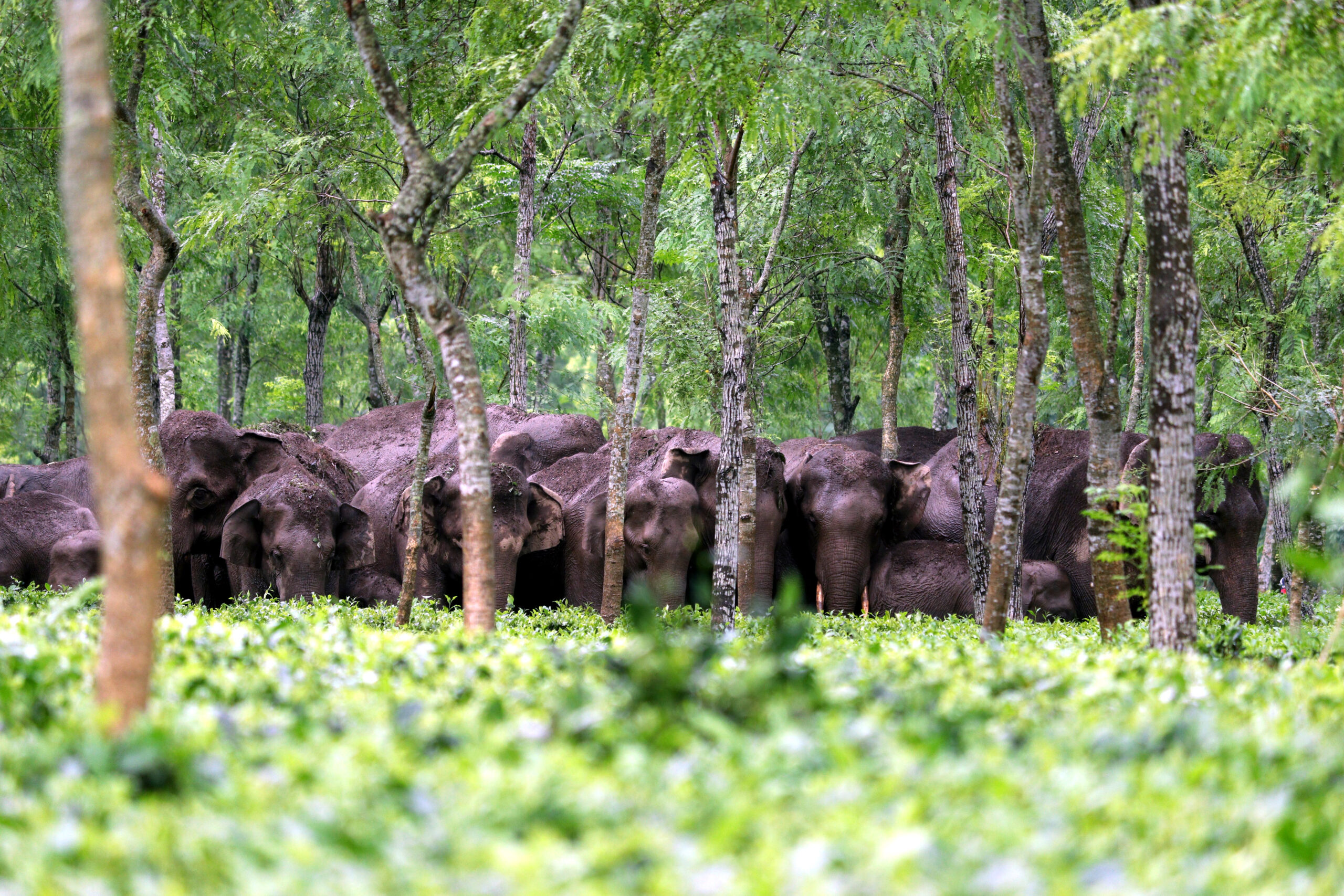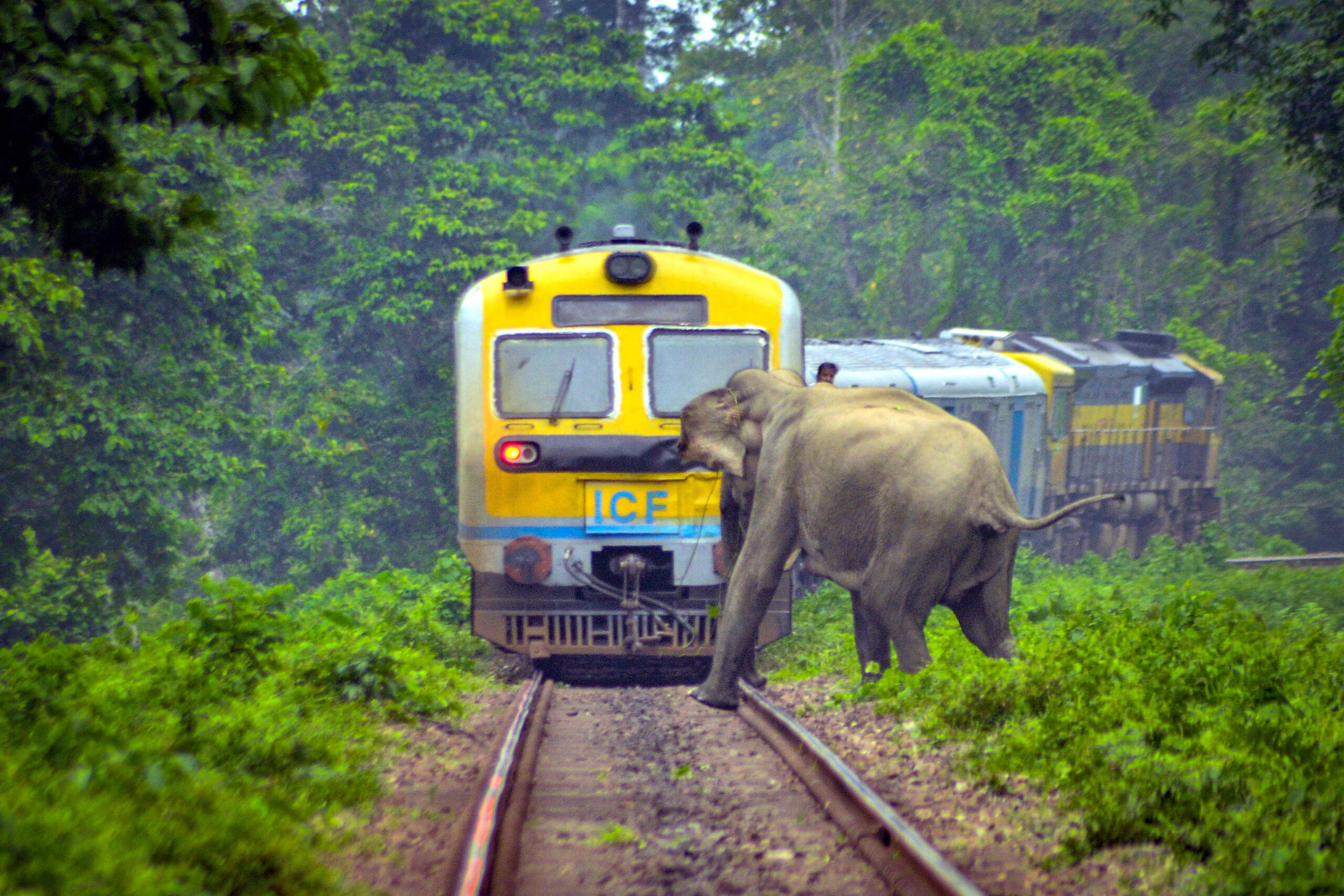The Pascal Munda incident near the Numaligarh’s Morongi tea estate in Upper Assam stirred some much-needed discourse on Human-Elephant Conflict (HEC) in July this year. A group of villagers teased a herd of elephants on NH 39 and when one of them retaliated, it led to the death of Munda, a local. The entire ordeal was captured on camera and soon went viral.
Whose fault was it? The elephants who were quietly passing through a human colony located between tea estates, or the humans who felt encroached upon by the herd? It was a case of absence of altruistic behaviour.
Last year, an HEC incident occurred in north Bengal’s Titi – Buxa corridor. An intoxicated 19-year-old was attacked by a mother elephant after the teen hurled stones at her baby. During the attack, he fell into a nullah, but was miraculously saved. A few kilometres away, a 50-year-old had died in 2018 after he chased an elephant for a selfie.
An obsession with entertainment and making instant viral videos at the expense of the majestic creature is slowly becoming a pattern in several parts of India, from Karnataka to West Bengal.
If problems like electrocution, deforestation, illegal encroachments and fencing weren’t enough, the added burden of social media is further pitting the elephants and humans against one other.

To break the emerging but dangerous pattern, S P Pandey, a primary school teacher from Malbazar in Jalpaiguri district, has been conducting sensitisation workshops for the last two years across five elephant corridors — Apalchand-Mahananda, Gorumara-Apalchand, Apalchand-Kalimpong (via Sylee TG), Apalchand-Kalimpong (via Meenglass TG) and Chapramari-Kalimpong.
The 43-year-old has seen some success, thanks to his efforts to safeguard the rights of wild animals and mitigate conflicts since 2013. For this, he was recently recognised as a Green Corridor Champion by the Wildlife Trust of India (WTI). He is now working in collaboration with the WTI to further champion the cause.
“Our association with S P Pandey and his team at SPOAR (Society for Protecting Ophiofauna and Animal Rights) dates back to 2018. He has been a dedicated force in the North Bengal region, with the right kind of passion and commitment to save wildlife and wild spaces for many years, and we are proud to have partnered with him to take forward conservation initiatives in the region. With the West Bengal Forest Department, we have been able to establish a monitoring mechanism across nine elephant corridors in the Duars region with some key local level actions mobilised for elephants and their safe passage,” says Upasana Ganguly, manager and head, Right of Passage of Elephant Corridors Projects, WTI.
The Better India spoke to Pandey at length about his work and impact.
A mosaic landscape
Before delving into what motivated Pandey to commit to the cause of animal safety and the steps he takes, it is vital to understand the topography of the region.
The northern elephant range in West Bengal extends from the Mechi River along the Indo-Nepal border in the west to the Sankosh River in the east, bordering the state of Assam. Close to 25% of the forest area houses endangered animals like tigers, elephants, one-horned Rhinos, clouded leopards, king cobras and red pandas. The Terai and Duars regions thus form a natural habitat for the elephants and a passageway to migrate to Nepal and Bhutan.
Tea gardens form an integral part of the landscape and 90% of these in Jalpaiguri fall under the conflict zone. In between the tea estates are farmlands and human settlements.
“There are nearly 500 elephants in the region. Due to the mosaic landscape that forms the passage route for elephants, HEC has increased over the years. Between 2009 and March 2018, 116 people died due to elephants and 217 people were injured in Gorumara Wildlife Division alone, which covers most of the conflicted areas. The average annual death count of elephants stands at seven, and 50% of those are preventable,” says Pandey.

Even if the elephants are allotted ‘protected area network’, they are natural wanderers. Only 20% of the world’s elephants live in protected areas. Green spaces and areas with less human population are ideal habitats for the mammals, and so it’s no wonder why they see tea gardens as part of it.
As the elephants move around, farmers and owners install barbed wires or worse, electric fences, which are fatal. Open live wires are another weapon farmers deliberately use to keep away the elephants. This can irritate them and in turn lead to more attacks. When humans are not compensated fairly for the damage, they become more intolerant. It is a never-ending and vicious cycle.
“Not all estate owners or labourers want to harm the animals on purpose. Sometimes, when the elephants raise their trunk to pluck fruits, they come in contact with the fence and get electrocuted. Since the lockdown, there have been three such incidents,” Pandey notes.
On top of these hardships is the issue of alcohol addiction. Not only do the intoxicated men end up disturbing the elephants, but they also leave volumes of home-made liquor in the farm or at home. Cases of elephants consuming the liquor and going out of control are not uncommon in the region, Pandey says.

The final nail in the coffin is the vast north eastern railway network passing through Mahananda Wildlife Sanctuary, Chapramari Wildlife Sanctuary and Eastern Duars Elephant Reserve and protected network areas. Nearly 73 wild elephants (from 2005 to 2018) have died while crossing the tracks, Pandey notes.
Having been raised in a village that recorded frequent visits by elephants, snakes and leopards, Pandey started rescuing animals at 15. Initially it was only snakes, but as he realised extent of torture and harm on animals, he formally launched SPOAR in 2013, although his work had begun in 2011 itself. Through the organisation, he collaborates with the local forest officials, gram panchayats, tea estate owners and more to identify the issues and solve them.
‘Collaboration of stakeholders is need of the hour’

One of the first problems that Pandey tackled was alcohol addiction and open defecation. After realising that convincing men to give up alcohol is futile, he approached their wives and daughters. Through awareness programmes, he convinced them to not prepare the liquor. He gave examples of multiple mishaps. This has not mitigated the problem entirely but many households have stopped making liquor. Through mobilisation, Pandey also helped villagers construct toilets through the Swachh Bharat Abhiyan scheme. Every year, Pandey says he reaches at least 1,000 villagers to conduct such awareness programmes.
Next, he approached more than 25 tea state owners and requested them to replace electrical fencing with natural fencing like wood, bamboo or bushes. This was the hardest exercise, according to Pandey, “Only three owners changed their fencing but the rest refused to remove the existing ones and said they won’t put in electrical fencing in the future. Putting up or dismantling fences involves high costs, which the owners are not ready to pay. Our team will continue pursuing this matter.”
According to Pandey, a network of 26 Quick Response Teams (QRT) covering the entire northern elephant corridor belt has brought about the most change. Every team has a minimum of six local volunteers who have been trained by the WTI and Pandey in mitigating HECs.
These individuals are highly motivated to work for the welfare of elephants and don’t charge any money. When the herd is passing, volunteers alert the villagers in advance and even keep barriers to prevent humans from coming in their way. In case of injured animals or humans, the volunteers help the forest officials in taking them to the nearest hospital.
“Since farm labourers work on daily wages, any attack can hamper their income. We give them monetary help, ration and even take care of their children. Ever since the formation of QRTs, the conflicts have reduced in the region. We are seeing a mindset change as well,” he adds.
In his ten years of experience, Pandey has realised that most people want to save wildlife and co-exist with them, but conflicts arise regardless, due to several reasons. Only a multi-pronged approach from various stakeholders can improve the situation. With his work, he hopes to save elephants’ image as charismatic mammals instead of something that is life-threatening.
Edited by Divya Sethu
No comments:
Post a Comment